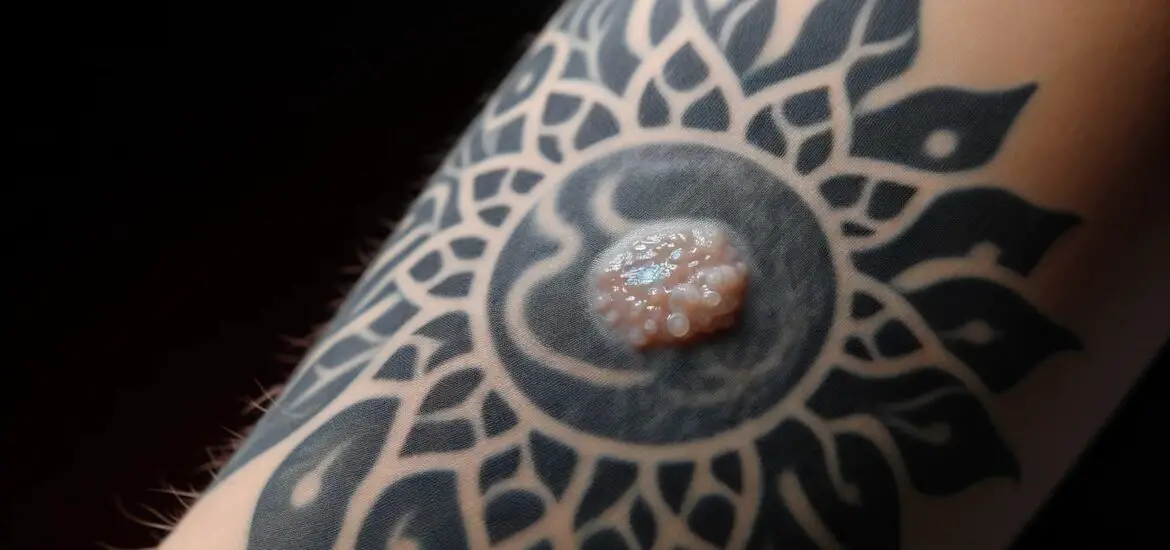If you’re asking, “Should skin blister after laser tattoo removal?” you’re certainly not alone. This article will arm you with detailed information on the laser tattoo removal process, why blistering occurs, and what steps you can take to ensure a smooth recovery.

Table of Contents
Should Skin Blister After Laser Tattoo Removal? Easy Answer
One of the most frequently asked questions following laser tattoo removal is about the occurrence of blisters. The straightforward answer is yes; blistering is often considered a normal response to the treatment.
Blisters are a sign that your body is healing and beginning the process of removing fragmented ink particles from the skin. The formation of blisters is usually a byproduct of the laser’s interaction with the tattoo ink and the skin’s top layers.
According to a study published by NCBI, blistering is a frequent side effect. Thus, if you experience blistering, it’s typically not a cause for immediate concern and is generally considered a part of the natural healing process.
Why Does Blistering Occur?
Blistering is a direct result of the heat generated by the laser during the tattoo removal process. The laser light is calibrated to target tattoo ink, causing the ink particles to heat up and break down into smaller pieces.
However, the surrounding skin cells can also absorb some of this heat, causing a mild form of thermal injury. Your body responds to this localized injury by sending fluids to the affected area to aid in the healing process, resulting in a blister. This is similar to what happens if you get a first-degree burn.
Should You Be Concerned About Blistering?
While blistering is commonly observed and usually part of the healing process, it’s essential to keep an eye on your skin’s condition during the recovery phase. Watch for potential warning signs of infection or other complications, which could include symptoms like increased redness, heightened pain, pus, or a foul smell emanating from the blister.
If you notice any of these symptoms, it’s crucial to seek medical advice right away. Untreated infections can lead to more severe complications, including scarring.
Check out these other articles…
Skin Peeling After Laser Tattoo Removal: Essential Care Tips
Pink Skin After Laser Tattoo Removal: Essential Care Tips
Does Laser Tattoo Removal Work on Dark Skin? Detailed Answer
Why is Tattoo Darker After Laser Removal? Quick Answer
What is the Best Laser for Black Tattoo Removal? Answered
How to Care for Blisters After Tattoo Removal
Effective aftercare is vital to minimize the risk of infection and to promote smooth healing. Here’s a detailed guide on how to care for blisters after your tattoo removal procedure:
Keep it Clean: Wash the blister and the surrounding area with mild, non-alcoholic soap and lukewarm water. Avoid using hot water or scrubbing the area vigorously, as this could worsen the blister.
Avoid Popping: Popping a blister can introduce bacteria into the wound, increasing the risk of infection. If the blister pops naturally, clean it immediately and consult your healthcare provider for further advice.
Apply Ointment: A thin layer of antibiotic ointment can be applied to the blister. This helps in keeping the area moist and reduces the risk of infection. However, it’s best to consult your healthcare provider for specific ointment recommendations. (Source)
Use a Bandage: Cover the blister with a sterile, non-stick bandage to protect it from external irritants and bacteria. Replace the bandage daily or whenever it becomes wet or dirty.
You can get this Dealmed Fabric Adhesive Bandage with Sterile Non-Stick Pad from Walmart.
Monitor for Infection: Regularly inspect the blister for signs of infection such as unusual color changes, increased pain, or pus. Consult a healthcare provider immediately if these symptoms appear.


